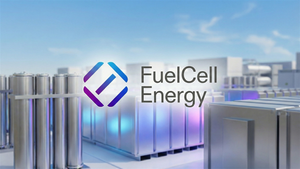
Denver, CO – Newmont Corporation (NYSE: NEM), the world's leading gold company, announced a stellar third quarter 2025 earnings beat, significantly surpassing analyst expectations. The impressive financial performance was primarily fueled by a dramatic year-over-year surge in gold prices, which reached unprecedented levels throughout the quarter. While the robust results underscore the immense profitability potential within the gold mining sector during periods of elevated commodity prices, the market's reaction has been notably mixed, with initial gains giving way to profit-taking and concerns over production volumes.
The strong earnings report, released after the U.S. market close on October 23, 2025, highlights the critical interplay between global economic conditions, investor sentiment, and the fortunes of major mining operations. Newmont's ability to capitalize on a buoyant gold market provides a compelling narrative for the resilience and strategic positioning of top-tier producers, even as investors scrutinize operational efficiency and future growth trajectories.
Newmont's Golden Quarter: A Deep Dive into Performance and Market Dynamics
Newmont's Q3 2025 financial results painted a picture of exceptional top-line and bottom-line growth. The company reported a staggering $5.52 billion in revenue, marking a substantial 20% increase from the $4.605 billion recorded in the same quarter last year. This figure comfortably exceeded analyst consensus estimates, which ranged from $4.97 billion to $5.27 billion. Even more impressive was the adjusted net income, which doubled year-over-year to $1.9 billion, or $1.71 per diluted share, handily beating analyst projections that hovered between $1.29 and $1.44 per share. The company also achieved a record $1.6 billion in free cash flow for the quarter, continuing a streak of exceeding $1 billion for the fourth consecutive quarter.
The primary catalyst for this outstanding performance was the average realized gold price, which Newmont reported at an impressive $3,539 per ounce for Q3 2025. This represents a remarkable 40.5% to 41% increase compared to the $2,518 per ounce realized in Q3 2024. The sustained strength in gold prices throughout 2025, driven by a confluence of macroeconomic uncertainties, persistent geopolitical tensions, and robust central bank buying, propelled the precious metal to new all-time highs. This significant pricing advantage translated directly into substantial margin expansion across Newmont's extensive global operations, underpinning the surge in both revenue and profit.
Despite the undeniably strong financial figures, the immediate market reaction to Newmont's earnings announcement was characterized by a degree of ambivalence. Shares initially saw a positive uptick, gaining 2.15% to close at $89.48 in aftermarket trading on October 23. However, this initial enthusiasm was short-lived. Subsequent trading sessions on October 24 saw the stock facing significant profit-taking pressure, leading to a decline of 2.37% post-earnings, and further dropping over 5% in premarket activity. This mixed response can be attributed to several factors: a substantial pre-announcement rally that saw Newmont shares appreciate approximately 30% leading up to the report, setting high investor expectations; a 15% year-over-year decrease in gold production to 1.4 million ounces, raising questions about operational efficiency and future output; and investor focus on forward guidance, potential increases in 2026 capital expenditures, and skepticism regarding the long-term sustainability of record gold prices.
Golden Tides Lift All Boats: Winners and Losers in the Gold Mining Sector
Newmont's impressive Q3 2025 performance, largely driven by the prevailing high gold prices around $3,539 per ounce, serves as a powerful indicator of the current health of the gold mining sector. In this environment, most major gold producers with unhedged positions are poised to benefit significantly. However, a closer look reveals varying degrees of advantage, primarily dictated by operational efficiency, cost structures, and production consistency.
Newmont (NYSE: NEM), despite a 15% year-over-year dip in Q3 production to 1.4 million ounces, stands firmly as a clear winner. Its disciplined cost management, evidenced by a gold co-product All-in Sustaining Costs (AISC) of $1,566 per ounce in Q3 2025, coupled with its largely unhedged strategy, allowed the company to convert elevated gold prices into record free cash flow and robust net income. This demonstrates that even with minor operational headwinds, efficient large-scale producers can thrive when commodity prices are exceptionally strong.
Among its peers, Agnico Eagle Mines (NYSE: AEM) emerges as a particularly strong beneficiary, if not the leading winner in terms of per-ounce profitability. Agnico Eagle reported a remarkably competitive AISC of $1,289 per ounce in Q2 2025, significantly lower than Newmont's. This superior cost efficiency translates into higher profit margins per ounce, allowing the company to maximize returns from the current gold price environment. With strong production figures and an unhedged strategy, Agnico Eagle is exceptionally well-positioned to capitalize on sustained high gold prices.
Other major players, such as Kinross Gold (NYSE: KGC) and Barrick Gold (NYSE: GOLD), are also strong beneficiaries. Kinross Gold, with a competitive Q2 2025 AISC of $1,493 per ounce and consistent production guidance, has successfully expanded its margins beyond the mere increase in gold prices, indicating effective cost control. Barrick Gold (NYSE: GOLD), whose Q3 2025 results are anticipated in November, showed a Q2 2025 AISC of $1,684 per ounce and a temporary production decrease. However, its maintained full-year guidance and historical shift away from hedging mean it stands to gain substantially from current gold prices, particularly as it addresses operational disruptions and production normalizes in the latter half of the year. While no major unhedged gold miner is truly a "loser" in this high-price environment, companies with lower AISC like Agnico Eagle will naturally capture a greater share of the profit margin per ounce, offering a relative advantage in profitability and potentially shareholder returns.
A Golden Era for Miners: Broader Implications and Industry Shifts
Newmont's Q3 2025 triumph, set against the backdrop of gold prices consistently trading around an unprecedented $3,539 per ounce, underscores a significant and potentially sustained golden era for the mining industry. This event is not an isolated incident but rather a potent reflection of, and contributor to, several profound shifts across global markets and the mining sector. The sustained rally in gold, which broke past $3,500 per ounce by April 2025, is primarily driven by a powerful confluence of macroeconomic uncertainty, persistent inflation concerns, escalating geopolitical tensions (including ongoing trade conflicts), and record-setting gold purchases by central banks worldwide. A weaker U.S. dollar and expectations of future interest rate adjustments by the Federal Reserve further bolster gold's appeal as a non-yielding safe-haven asset, fueling renewed investor demand from both institutional and retail segments.
These robust market conditions are translating directly into enhanced profitability and cash flow for gold mining companies across the board. The FTSE Gold Mines Index, for instance, has witnessed a remarkable nearly 70% growth in EBITDA, with net profit margins for major miners reaching an impressive 50% by Q2 2025. This financial strength is clearly reflected in the stock performance of leading gold miners, with companies like Newmont, Barrick Gold (NYSE: GOLD), and Agnico Eagle Mines (NYSE: AEM) seeing their share prices more than double in 2025, significantly outperforming other sectors. This newfound financial flexibility is prompting increased capital allocation towards exploration, as companies are more willing to invest in discovering new deposits, and a greater commitment to returning value to shareholders through dividends and share repurchases, as demonstrated by Newmont.
The ripple effects extend beyond direct competitors to the entire gold mining ecosystem. Companies across the supply chain – from specialized exploration firms and technology providers to engineering services and joint venture partners – are all benefiting from the heightened activity and investment in the sector. The success of strategic collaborations, such as the Côté Gold Mine joint venture between IAMGOLD (TSX: IMG) and Sumitomo Metal Mining, exemplifies how partnerships can mitigate operational risks and unlock growth opportunities in this buoyant market. Furthermore, the industry is accelerating its adoption of advanced technologies, including automation, digitalization, and AI-powered sorting, not only to enhance operational efficiency and safety but also to meet increasingly stringent Environmental, Social, and Governance (ESG) requirements, which are now critical for securing capital and maintaining social license to operate.
From a regulatory and policy perspective, the high-value nature of gold is intensifying scrutiny on responsible mining practices. The focus on environmental stewardship and community engagement is paramount, with regulatory bodies in various jurisdictions, such as Quebec, emphasizing robust community consultation and environmental protection. The persistent issue of illegal gold mining and its devastating environmental consequences, including mercury and arsenic contamination, is also drawing increased government attention, prompting stricter regulatory efforts like bans on local gold trade to foreigners and the establishment of gold traceability platforms. Geopolitical considerations are also shaping policy, with some nations prioritizing domestic critical mineral supply chains, which could influence future mining policies and investments. Historically, gold has consistently served as a vital safe-haven asset during periods of economic and geopolitical turmoil, with notable surges in the 1970s and 80s, during the 2008 financial crisis, and the 2020 pandemic. The current rally echoes these precedents, reaffirming gold's enduring role as a hedge against global uncertainty.
The Road Ahead: Navigating a Golden Future
Newmont's Q3 2025 earnings beat, underpinned by gold prices holding firm around $3,539 per ounce, positions the company and the broader gold mining sector at a critical juncture. The immediate future, extending into 2026, promises continued opportunities but also demands strategic foresight and disciplined execution. For Newmont (NYSE: NEM), its robust financial health, characterized by record free cash flow of $1.6 billion and a near-zero net debt position, provides a strong foundation. The company is poised to continue enhancing shareholder returns through sustained dividends and potential share repurchases, while strategically managing its debt. While its Q3 production saw a 15% year-over-year dip, Newmont's focus on cost optimization, as evidenced by a reduced All-in Sustaining Costs (AISC) of $1,566 per ounce, indicates a commitment to efficiency. The company's 2026 outlook anticipates a slight decrease in managed production but an increase in capital expenditure to advance key projects, signaling a strategic reinvestment phase.
Looking further ahead, the long-term trajectory for Newmont and the industry will be shaped by a series of strategic pivots and evolving market dynamics. Newmont's recent non-core asset divestitures highlight a clear strategy towards optimizing its portfolio, focusing on lower-cost, higher-margin "Tier 1" assets. This pursuit of operational simplicity and enhanced cash flow will likely continue. Across the sector, technological adoption will be paramount; investments in digital technologies, automation, and AI-driven solutions are crucial for improving efficiency, reducing costs, and mitigating challenges like labor shortages and declining ore grades. Furthermore, the increasing emphasis on Environmental, Social, and Governance (ESG) factors will necessitate deeper integration of sustainable practices, responsible water use, renewable energy, and robust community engagement to maintain the vital social license to operate. While current sentiment favors capital discipline, a prolonged high-price environment could eventually pave the way for strategic, value-accretive mergers and acquisitions, particularly as companies seek to consolidate high-quality assets or even diversify into critical minerals, a sector driven by the global energy transition. Newmont, already producing copper from its core operations, possesses inherent optionality in this regard.
The market opportunities for gold miners are substantial. Persistent geopolitical uncertainty, continued central bank buying, and robust investor demand for safe-haven assets are expected to keep gold prices elevated, with some analysts, like Goldman Sachs, forecasting gold to reach $4,000 per ounce by mid-2026. This environment provides significant operational leverage, meaning higher profitability per ounce extracted, which can be reinvested into growth and efficiency. Technology offers a powerful avenue for optimizing operations, from AI-driven analysis to predictive maintenance. However, significant challenges loom. The industry grapples with persistent cost inflation across labor, energy, and other inputs. Declining production and ore grades, as seen in Newmont's Q3 dip and projections of global gold supply peaking around 2026, pose long-term supply challenges. Regulatory and geopolitical risks, including increased scrutiny, resource nationalism, and instability in key mining jurisdictions, remain ever-present threats. Ultimately, the industry must balance maximizing current profitability with strategic long-term investments, avoiding the pitfalls of past boom-bust cycles fueled by undisciplined expansion.
Potential scenarios range from a sustained golden run to a more moderated market. Should gold prices remain elevated or even climb towards $4,000 per ounce, Newmont is exceptionally positioned to generate sustained, exceptional free cash flow, enabling further debt reduction, increased shareholder returns, and strategic investments in its high-quality asset base. The broader industry would thrive, with easier access to capital for junior miners, though managing cost inflation and declining grades would remain crucial. Conversely, a moderation in gold prices, perhaps to the $2,500-$3,000 range, would force Newmont to double down on cost control and potentially defer marginal projects, while less profitable miners across the industry would face significant pressure, potentially accelerating consolidation. Regardless of the precise trajectory, the overarching theme for Newmont and its peers will be a relentless pursuit of efficiency, responsible mining, and strategic adaptation to a dynamic global landscape.
Conclusion: Newmont's Golden Horizon Amidst Market Dynamics
Newmont's Q3 2025 earnings report stands as a testament to the company's robust financial health and strategic positioning in an exceptionally favorable gold market. The significant beat on revenue and earnings, propelled by an average realized gold price of $3,539 per ounce and bolstered by record free cash flow, underscores Newmont's ability to capitalize on prevailing market conditions. While a 15% year-over-year decline in gold production in Q3 did introduce a note of caution, the company's disciplined cost management and strong balance sheet provide a solid foundation for future endeavors.
Looking ahead, the gold market appears poised for continued strength, with macroeconomic tailwinds, persistent geopolitical tensions, and strong central bank demand fueling bullish price forecasts, potentially reaching $4,000 per ounce by mid-2026. This environment is fundamentally transforming the gold mining industry, leading to expanded margins, a shift to a net cash position for the sector, and an anticipated increase in mergers and acquisitions activity. Newmont's strategic acumen, particularly its focus on operational efficiency and a high-quality asset portfolio, positions it as a key beneficiary of this golden era.
For investors, vigilance remains paramount. Close attention should be paid to the trajectory of gold prices, Newmont's operational execution (especially regarding production volumes and All-in Sustaining Costs), and its capital allocation strategy—how it deploys its substantial free cash flow for debt reduction, shareholder returns, or strategic growth. Monitoring broader industry M&A activity and considering valuation metrics against long-term gold price assumptions are also crucial. While analyst ratings for Newmont are largely positive, a diversified approach, potentially including gold ETFs or physical bullion, can help mitigate company-specific and operational risks. Ultimately, Newmont's Q3 performance highlights its strong position in a booming market, but sustained profitability and investor confidence will hinge on its consistent strategic execution in a dynamic global economic landscape.
This content is intended for informational purposes only and is not financial advice


















